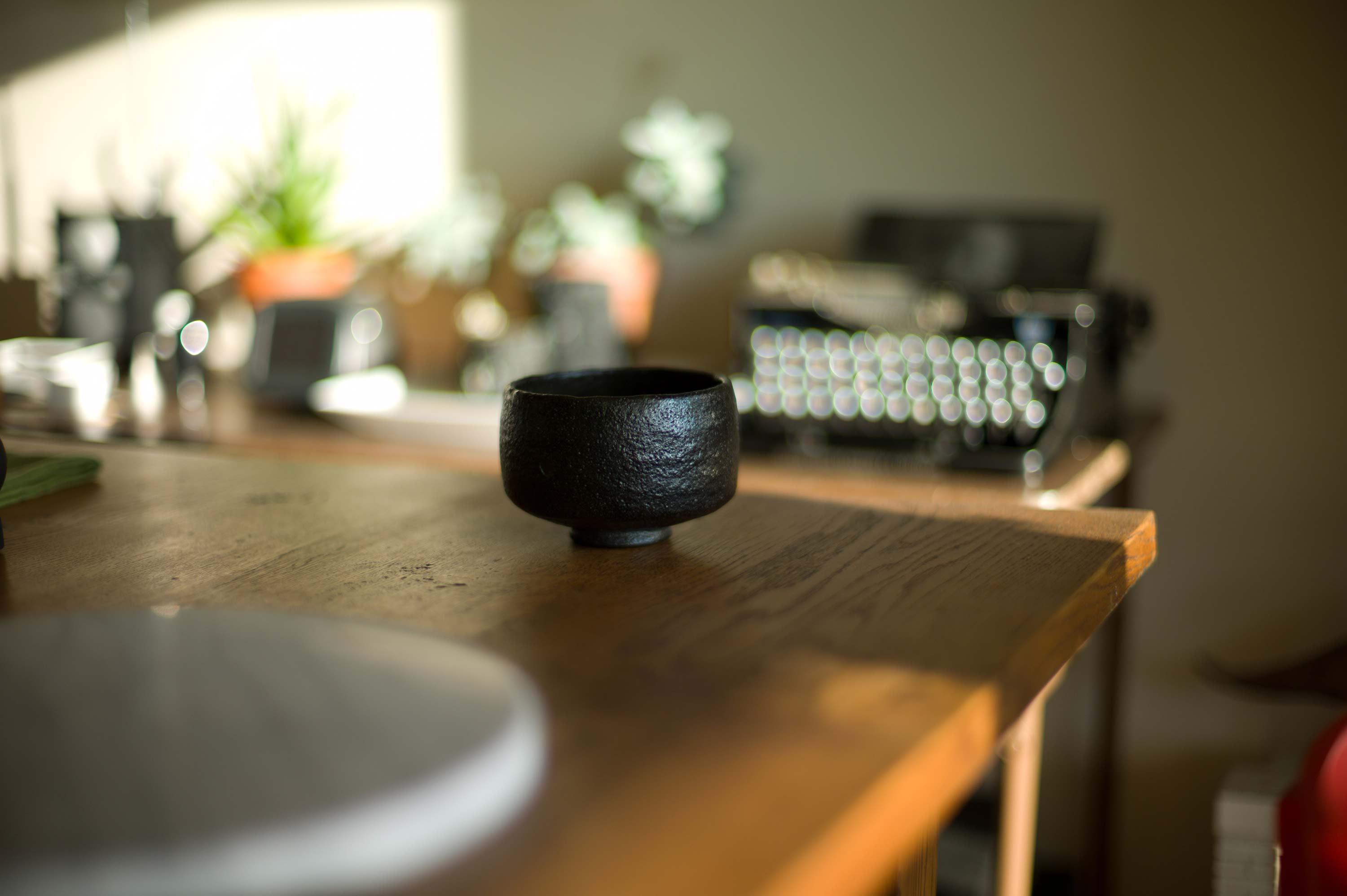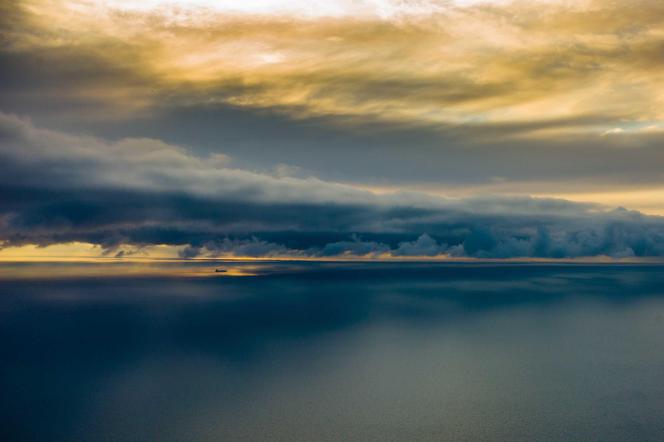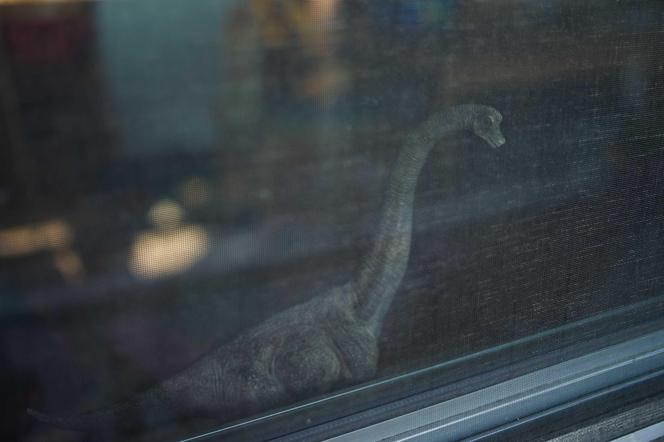
I have been drinking Matcha (The ceremonial green tea from Japan) for many years now. It was a very private experience and I did it occasionally. At some point a few months ago, I decided to drink my tea in “public”. I started http://instagram.com/viewsofmytea as an experiment and a project for myself. I would drink 888 bowls of tea, share the images of the tea in a public space, and see what could happen. The number of 888 bowls of tea was chosen just as spontaneously. I felt it would be a lucky and good number. Only later did I discover how many different meanings it has in various cultures.
The tea I drink in “public” is “thin tea” Matcha from Uji. It is obviously not the only thing I drink and it is not the only Tea I drink and also not the only Matcha I drink.
The project has been evolving since the very first bowl I drank in its context. I should have probably have created a list similar to the one below at earlier points in the process. That is obviously no longer possible.
Even as I was writing down the list, I discovered new things that I was not able to include in the list. And they are major things.
But that’s probably also just additional proof. Proof of what though?
The value of a project? The importance of tea? The importance of rituals for an active mind?
Hmm. This introduction is already too long. Here we go:
01
Tea is excellent as an element of a ritual. It is a beautiful and profound idea that can be experienced with all senses.
02
Someone will translate that beautiful thing into something that will generate a different kind of green for them, but that will very much miss the point.
03
There is actually no real point though.
04
Every Journey starts with a single step. The best journeys never end. The journey is a destination. There is a very good reason why this is called “the path of the tea.”
05
What at first appeared like the universe coming to my hands, often feels like my hands dancing with the universe. And not just my hands; all senses. The path of the tea is in some ways like the path of the sword, or the path of the hand. But it is, in some ways, the opposite, the non-violent way of meditation and dealing with the universe.
06
The tea-rooms, as everything connected to the path of the tea have a certain meaning that is delivered without words. And maybe best without words.
07
One of the reasons why the entrance to a tea-room is so small, is to make everyone bow down, and reduce themselves while passing through. The small size also made it more difficult to bring in some of the more violent weapons. To experience certain things we need to leave guards and aggression behind, outside.
08
Words and even intent can be very hurtful. While attempting to discover a path that is by definition peaceful, one should avoid what could soil that path. Especially when that path is just for oneself. No advantage will emerge from soiling one’s own path.
09
It is a preposterous illusion that anything we do is truly completely our own. Ownership is an agreement.
10
Talking about beauty can soil and destroy beauty. Talking about violence can feed and create violence. What does that say about the nature of language? Is spoken and written language something we might need to leave out of the room at times as well? (Talking about beauty obviously can create beauty and can be beautiful. But it requires much more effort and care to do that. Violence through language is cheap.)
11
Some weapons are beautiful and desirable objects. I am reminded of an absolutely gorgeous blade of a sword I saw in an exhibition in Kyoto, just steps away from a lopsided tea bowl called “Turle fur”. I just imagined which one of the objects I would like to spend more time with, and what thoughts would emerge from that relationship. I also imagine how that perception might have shifted over time.
12
Everything is in transformation. The bowl I am using to drink my tea will eventually break. But will that act bring it closer to its purpose? The bowl was born from clay, it went through hands of Shoraku III and through fire and water and many, many more hands. Where will it go next?
13
The same is true for the tea. Where does the tea become tea? Is it tea the moment I ingest it? Is it tea the moment I share a picture of it? Is it tea when it is packaged in Japan? Is it tea when it is plucked from the tree? Is it tea when it is grown as a tree? Is it tea when it is a seed placed in the soil? Is it tea when it is created as a seed from a tree plant? Was it tea when it was first discovered as such? Was it tea before it was called tea? Was it tea before it became a tea plant? Where does it start, and where does it go towards?
14
Hard and simple answers can be very wrong, even if they seem completely correct at the time they are spoken or thought.
15
The answers we discover seem to be coming from within, but they are usually something that is just filtered through the thing we think of as ourselves.
16
The amount of tea I have drunk, as part of the project at this point is approximately the equivalent of the water content of my body. Where does the water come from? Where does my body come from? Where does the tea really come from? And where are they all going?
17
Tea can die. I have tasted dead tea. And it is not compatible with me. It took days and days to make the horrible aftertaste to disappear from my tea bowl as well. However that dead tea supposedly can be used for cookies.
18
I assume that my tea-bowl, or Chawan was created by Shoraku III, (佐々木 虚室 - Sasaki Kyoshitsu). He is a man I would like to meet. I watched a video of him making a bowl similar to the one he made for me. I enjoyed the video very much. ///update/// After writing this here, I tried to search for Kyoshitsu San again, and found him on Facebook. We just had a short exchange and he confirmed that my Chawan is indeed his work. It is indeed “TYOUJITOU [kitanoguro] copy opus”. I now hope to be able to visit his studio when in Japan again.
19
My Chawan is a copy of a bowl used by Sen no Rikyu. It is a very special bowl that I chose out of many, many bowls in Kyoto, and finding out the deeper story of that bowl and the bowl it was based on has given me a deeper sense of meaning.
20
The Chawan I use is a copy of a Chawan Sen No Rikyu had made for a very special occasion. It was the Kitano tea party, a large tea gathering organized in Kyoto on October 1st 1587. The organizer was Toyotomi Hideyoshi. Hideyoshi was the man who eventually gave Sen no Rikyu the order to commit suicide. So the relationship between the two men was complex. They learned from each other, they amplified each other, and yet they also somehow challenged each other. The Kitano tea gathering was one of the challenging moments, one could think. Hideyoshi had invited 1000 tea masters for the event. Each one of them was only allowed to bring a very minimal amount of objects. On the other hand, he seemed to want to use the occasion to show off his tea room made of gold. In that room he wanted to serve tea, and he did. The event was planned for ten days, but it had to end sooner. Hideyoshi had served 803 people. Was he exhausted? Did he realize something else? Was the purpose of the gathering accomplished? Was it missed? The tea bowl I drink my tea from is based on the bowl that Sen no Rikyu had made for this particular event, and it feels like the counterweight to a golden room and 999 tea masters and ten days. It is a small bowl that appears for me made of some mysterious rock and was just pulled from the remnants of a quiet explosion a few days ago. It is a truly remarkable object filled with more mystery than I will be able to understand. But that’s one of the points.
21
I had no idea about any of the above when I “started” the project. And so I assume that there is so much more that I do not know now. (And a lot of what I know might be completely wrong.) I had seen a film scene about the Kitano tea gathering, on a flight from China to Germany. But I had no idea at that time that the bowl that was waiting for me at home could be in any way related to that event, nor was I aware of the meaning that the whole chain of discoveries could potentially unlock.
22
A friendly Polish friend in Hamburg told me the name of my bowl. And he was able to tell me because he was able to read something I owned since the moment I purchased the bowl in a store in Kyoto.
23
Where does the bowl I own begin? Is it the bowl now, waiting for the next serving of tea? Was it the bowl before, when I took a picture of it? Was it the bowl when I filled it with tea and water? Was it the bowl when I found out its name? Was it that bowl when it was purchased in Kyoto and I did not know its name? Was it that bowl when it was shaped and fired to resemble a different bowl that had been used by Sen no Rikyu? Was it that bowl when Sen no Rikyu found out that he would be one of about thousand tea masters who would be invited to an event that was created to show off the power of a man he saw rise to that powerful position? Was it that bowl when it was clay in a wet spot of soil near Kyoto? Was it that bowl…
24
My understanding of beauty is evolving. Sometimes I can see it melt into something else. Sometimes I see it jump. Sometimes I realize that I am completely wrong, but I do not know when the next step will happen.
25
There is no perfect bowl of tea. A perfect anything requires a perfect everything. And there is no perfect everything.
26
Everything is connected to everything.
27
Water boils differently, dependent on time, day, season, amount of water, vessel, method.
28
I prefer water that had time to rest.
29
The water we drink now is the water that was here billions of years ago, and it is the water that will be here billions of years after us. It will be different. But it will be here, as it was here. This very moment is beginning and end and it is also the middle of something. A point is an intersection of lines? Parallel lines are lines that meet in infinity? A moment is like a point of an infinite amount of lines. Everything before this moment somehow guided us to it. And as we look at this very word here, and here, these lines are separating again. We can watch that experience in complete horror, or we can fall in love with the idea of transition.
30
This very moment.
31
My phone has a smooth surface that wants to be touched and held and swiped and pushed and looked at. The object says that it is made for connecting with others. But how well does it really do that? Better in some ways than in others? Over the course of the project I have met and connected with some key people. Some of them are alive. Some of them are not alive. Some of them are nearby and some are far away. The phone helped me to keep the connection active in some ways. But with the phone alone these connections would have been absolutely impossible.
32
The physical object that does not require new energy to be itself, can be more magical and insightful than an object that needs to be constantly fed energy to be what it is.
33
All information reaching us is imperfect. At best we understand about 80% of what others tell us. And I am not even sure I can trust the source, or trust my memory of receiving that information. And so everything we think we know: it is an illusion. And using the word “everything” immediately discredits everything.
34
I have “met” Japanese 16th Century Ceramic expert Łukasz Parobij. And I am very thankful for that. http://blog.teekeramik.com
35
I have “met” Daniel Burkus http://chanoyu-to-wa.tumblr.com and I am also very thankful for that.
36
I have met Tea Master Yoshihiro Terazono, and I am also very thankful for that.
37
I wonder what would happen if the three men met in person. I wonder if that would be an incredible event. I think it would be.
38
There are so many people I have met through the project. I was able to see little slivers of their experiences. A lot happens in Australia these days.
39
It is incredibly difficult to experience a long stretch of time without being distracted or disturbed, side tracked, pulled away. Being in the very moment at that very moment is an incredible accomplishment and a gift.
40
Tea is an excellent opportunity to connect to the very moment one is in.
41
Tea is also an excellent opportunity to connect to a deeper universal meaning of things.
42
It is obviously not really just about the tea. It never has been, I think. And there are obviously many more people out there who are obsessed with reducing tea to its “benefits” and “components” and what not. But by doing that, the intangible element is ignored. And in a way that intangible element is among the most important elements. That’s true not just for tea.
43
When doing anything, I try to imagine what impact on the planet it would have if everyone did the same little thing. We are clearly at a point in history where almost everything we do, multiplied by all inhabitants of the planet would lead to complete destruction of almost everything we know and love. This is not something that can stop us from living. But at least the awareness is a step towards some hopefully positive change.
44
It is a beautiful day today. And there is a sunrise and a sunset happening right this minute somewhere. And there is winter and summer and there is love and there is the lack thereof. All at the same time, right now. With our thoughts we can choose where we want to find ourselves. Some places can’t be reached easily, while others are readily available to us, and right in front of us.
45
Tea is like photography. Tea is nothing like photography.
46
I will likely laugh at some of the findings when I read about them just moments from now, or hours, or days or years. So please do the same. I hope it is clear that I don’t claim to know anything in particular here. Thank you.
47
I hate lists. They make me crazy.


Comments